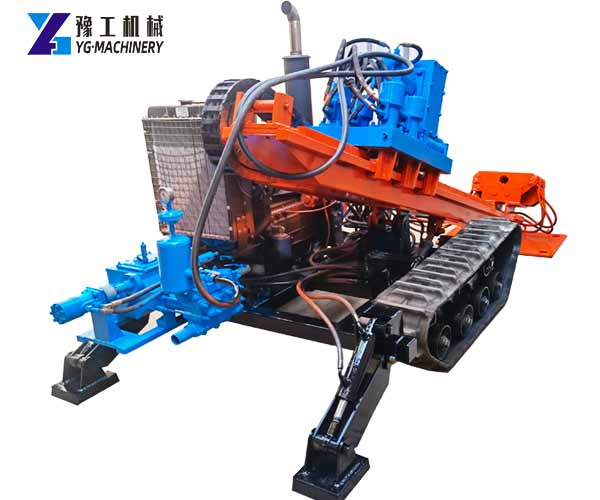Directional drilling has emerged as a transformative technology in the field of natural resource extraction and infrastructure development, enabling initiatives that were once deemed too complex or environmentally risky. As Recommended Reading and energy consumption continue to increase, the need for innovative drilling techniques has never been more important. This approach not only provides the ability to reach beneath the surface resources with pinpoint accuracy but also addresses the obstacles posed by geographical diversity and sensitive ecological areas. Grasping how directional drilling works is essential for successfully navigating the diverse landscapes of energy manufacturing, utility setup, and urban construction.
In this article, we will investigate the development of directional drilling technology, showcasing its applications in multiple industries such as petroleum, renewable energy, and building. We will discuss the different types of directional drilling, the machinery used, and the procedural procedures involved. From the advantages of lessening surface disturbance to the ecological advantages of employing these approaches, the insights shared here will illuminate the key role directional drilling plays in today's engineering projects. Whether you are a seasoned professional or just starting out in the sector, this detailed guide aims to link between technical expertise and practical application in a world that increasingly relies on streamlined and eco-friendly drilling approaches.
Grasping Angled Drilling
Angled drilling is a technique that allows drillers to direct the angle and direction of the wellbore during the drilling process. Horizontal Directional Drilling Northern Ireland stands in contrast to traditional straight drilling, allowing operators to reach multiple targets from a unified surface location. By maneuvering the drill bit through the subsurface with precision, angled drilling not only enhances resource extraction but also reduces the environmental footprint.
The development of horizontal drilling technology has been marked by notable advancements, including the introduction of more refined drilling fluids, mud motors, and downhole tooling. These innovations have enhanced the efficiency and precision of drilling operations, making it possible to navigate complex geological formations and tap into resources that were once considered unreachable. As technology keeps to evolve, the applications of horizontal drilling have grown across various fields, spanning oil and gas, utilities, and renewable energy.
Grasping the differences between vertical and horizontal drilling is crucial in recognizing the benefits of horizontal drilling. Straight drilling typically entails a straight drill path, while angled drilling can extend the distance of a wellbore significantly. This flexibility allows for improved resource recovery and offers a calculated approach to managing land use, particularly in city areas where surface disruption must be reduced. Through directional drilling, operators can effectively address problems posed by environmental diversity while maintaining the safety and effectiveness of their projects.
Advantages of Directional Boring
Horizontal drilling provides significant advantages compared to traditional drilling methods, especially by lessening land disruption. This technique enables drilling at multiple angles and depths without the need for extensive surface clearing, that is particularly beneficial in city and environmentally sensitive areas. By limiting the surface impact, directional drilling protects the landscape and minimizes the ecological footprint of drilling operations.
Another key gain is the efficiency it contributes to projects. Directional drilling typically needs less time and fewer resources than conventional drilling methods. With the ability to access several targets from a single entry point, operators can complete projects more rapidly and economically. This time-saving aspect leads to lower costs and increased efficiency, making directional drilling an attractive option for multiple industries such as oil, gas, and utilities.

Moreover, directional drilling enhances the security and precision of drilling operations. State-of-the-art technologies and techniques allow for accurate bore path planning and real-time monitoring, that minimizes risks associated with drilling in complex geological formations. This precision not just ensures the integrity of the drilling operation but also lessens potential hazards, ensuring a safer working environment for operators and surrounding communities.
Future Developments in Directional Boring
The future of horizontal drilling is about to be changed by tech innovations that boost precision and effectiveness. Innovations in drilling programs and sensor technology are paving the way for real-time data analysis, allowing operators to make educated decisions during boring operations. The combination of AI intelligence and machine learning systems is anticipated to simplify drilling processes, predict equipment failures, and optimize bore paths, thus reducing downtime and lowering costs.
As the demand for eco-friendly development grows, horizontal boring is adapting to meet these ecological challenges. New techniques are being created to utilize green drilling fluids and approaches that further reduce surface disruption. This focus on environmental responsibility aligns with the global movement for renewable power sources, where horizontal drilling is demonstrating essential in the setup of wind farms and geothermal systems, showcasing its versatility across multiple applications.
Moreover, the workforce in directional drilling is positioned to evolve with the introduction of enhanced training curricula centering on the latest techniques. As automation and online technologies become essential to boring processes, training the future generation of horizontal operators in these areas will be crucial. The focus on education will ensure that the sector continues to attract skilled workers who can adapt to the rapid shifts, ensuring that directional boring remains at the leading edge of contemporary engineering solutions.
